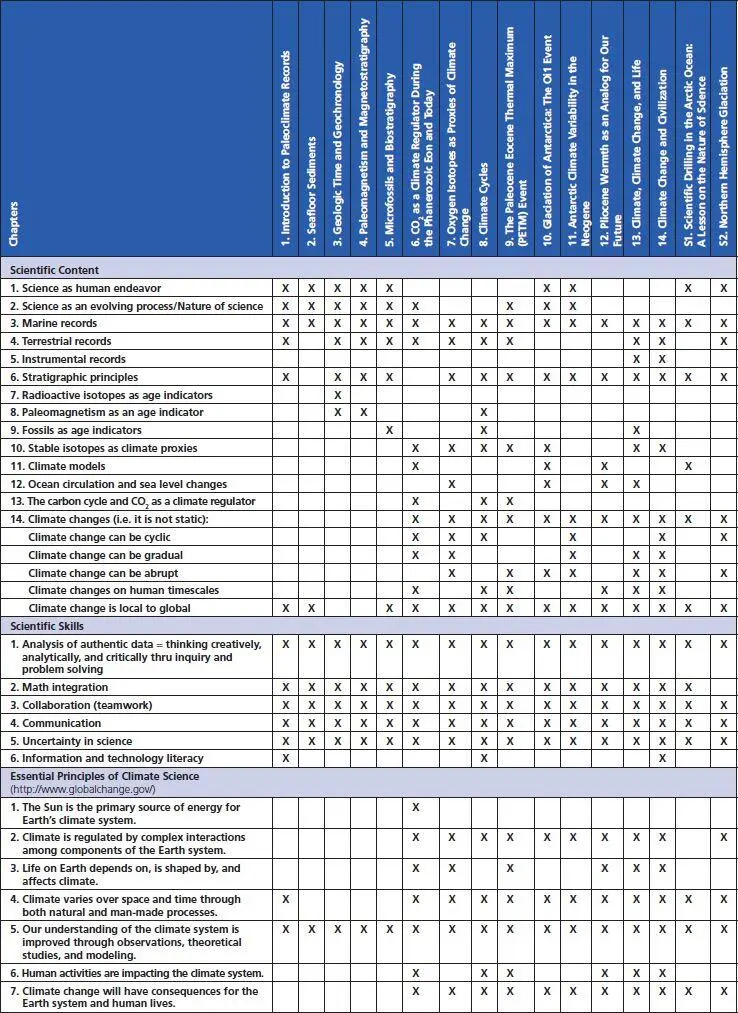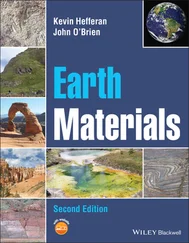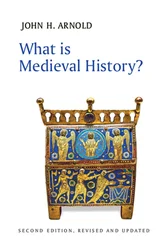Kristen St. John - Reconstructing Earth's Climate History
Здесь есть возможность читать онлайн «Kristen St. John - Reconstructing Earth's Climate History» — ознакомительный отрывок электронной книги совершенно бесплатно, а после прочтения отрывка купить полную версию. В некоторых случаях можно слушать аудио, скачать через торрент в формате fb2 и присутствует краткое содержание. Жанр: unrecognised, на английском языке. Описание произведения, (предисловие) а так же отзывы посетителей доступны на портале библиотеки ЛибКат.
- Название:Reconstructing Earth's Climate History
- Автор:
- Жанр:
- Год:неизвестен
- ISBN:нет данных
- Рейтинг книги:3 / 5. Голосов: 1
-
Избранное:Добавить в избранное
- Отзывы:
-
Ваша оценка:
- 60
- 1
- 2
- 3
- 4
- 5
Reconstructing Earth's Climate History: краткое содержание, описание и аннотация
Предлагаем к чтению аннотацию, описание, краткое содержание или предисловие (зависит от того, что написал сам автор книги «Reconstructing Earth's Climate History»). Если вы не нашли необходимую информацию о книге — напишите в комментариях, мы постараемся отыскать её.
how we know
what we know
Reconstructing Earth’s Climate History, Second Edition,
Reconstructing Earth's Climate History — читать онлайн ознакомительный отрывок
Ниже представлен текст книги, разбитый по страницам. Система сохранения места последней прочитанной страницы, позволяет с удобством читать онлайн бесплатно книгу «Reconstructing Earth's Climate History», без необходимости каждый раз заново искать на чём Вы остановились. Поставьте закладку, и сможете в любой момент перейти на страницу, на которой закончили чтение.
Интервал:
Закладка:
This content of the book is based in large part upon practices and results of scientific ocean drilling, especially scientific work of IODP, and its predecessor programs (i.e. ODP and DSDP), as well as the scientific work of the ANDRILL program. While program names have changed through different funding cycles (and will again in the future), the international commitment to support scientific ocean drilling has advanced the research community's understanding of how Earth's climate system works. These insights are an important backdrop for understanding modern climate change, for testing models of future climate, and for evidence‐based science communication with educators, students, the public‐at‐large, and policy makers.
Book Introduction to the Second Edition for Students and Instructors
Dear Students and Instructors,
We are excited to provide you with the opportunity to learn about Earth's climate of the past, and its relevance to climate of the present and future, through an inquiry‐based curricula design. This is the second edition of Reconstructing Earth's Climate History – Inquiry‐Based Exercises for Lab and Class , and we have worked hard to maintain the best content of the first edition, while also expanding topics, updating exercises, and reorganizing content to scaffold data‐rich material and support your learning. As the title of the book implies, this is a book that has you, the student, playing an important active role; you are to make observations, ask questions, wrestle with uncertainly, interact with your classmates and instructor, and work to synthesize information, pose evidence‐based hypotheses, and infer broad implications from case study examples. All of this is part of the process of scientific inquiry, which aims to build your content knowledge and observational and analytical skills.
In order to get the most out of your work with this book, we want you to know why and how we designed it, as well as what is new to the second edition. We think understanding the design will give you a roadmap of what to expect as you use this book to reconstruct Earth's climate history.
Motivation and Purpose
There has never been a more critical time for students to understand how the Earth works. Understanding the causes and potential consequences of Earth's changing climate are of particular importance because modern climate change is an issue that impacts economies, societies, environments, and lifestyles; furthermore these impacts are distributed differently across countries and populations. The context for understanding global warming today lies in the records of Earth's past. This is demonstrated by decades of paleoclimate research by scientists in organizations such as the International Ocean Discovery Program, the Antarctic Geological Drilling Program, the Byrd Polar and Climate Research Center's Ice Core Laboratory, and many others. The purpose of this book is to put key data and published case studies of past climate change at your fingertips, so that you can experience the nature of paleoclimate research and discovery. You will evaluate data, practice developing and testing hypotheses, and infer the broader implications of scientific results. It is our philosophy that addressing how we know is as important as addressing what we know about past climate.
Use of Real Data
The chapters in the book can be considered multipart exercises that build upon authentic datafrom peer‐reviewed scientific publications. One of the most effective means of conveying science data is through figures – graphs, photos, diagrams. Therefore, unlike many books where the figures supplement the text, in this book the figures are the central elements of every exercise . Questions and tasks within each exercise are constructed around the data or concepts presented in figures. This means that it is essential to carefully examine the figures and diligently read their captions. This may not be easy at first, but with practice (and this book will give you lots of it!) it will become second nature.
Content Topics
The content topics chosen for this book support the Essential Principles of Climate Science(USGCRP, 2009; Table 1)1. The relevance of investigating past climates for understanding modern climate change and for predicting future climate change is evident throughout the book. Reconstructing past climate change relies on investigations of multiple archives, including tree rings, corals, speleothems, ice, sediment, and sedimentary rock. In this book we focus primarily on climate change during the Cenozoic Era (the last 66.0 million years of Earth’s history; see timescale inside front cover of book). We therefore draw largely from ocean sediment core and ice core records, which are valuable archives of the past 200 million years and past 500 thousand years, respectively. The second edition expands on this to include more terrestrial records as well. As you will see, obtaining detailed natural records of Earth's climate history is a challenging undertaking, often involving expeditions to remote locations, complex coring technology, careful planning and execution, and hard work. Once obtained, paleoclimate records must be systematically described, ages must be determined, and indirect evidence (i.e. proxies) of past climate must be analyzed. Much like the work of a detective, geoscientists and paleoclimatologists reconstruct what happened in the past, and when and how it happened based on the clues left behind by the events that took place.
TABLE 1. Chapter alignment to scientific content, skills, and USGCRP (2009) climate literacy principles.

The chapters in this book are organized to first explore fundamental aspects of paleoclimate research and the “tools” used to conduct this research. Chapter 1introduces how marine and terrestrial records are obtained, with increased representation of terrestrial records compared to the first edition. Chapter 2focuses on describing marine sediments, a major archive of past climate. Chapters 3– 5focus on how ages of geologic and paleoclimate records are determined using multiple methods. New to the second edition, Chapter 3introduces relative and radiometric age dating techniques. We also reversed the order of two chapters from the first edition: paleomagnetism (now Chapter 4) and biostratigraphy (now Chapter 5) because magnetostratigraphy is a bridge between the numerical ages that radiometric dating provides and the relative ages that fossils provide. Chapter 5was expanded to include a new unit on organic‐walled microfossils.
Chapters 6and 7transition the content of the book from paleoclimate tools (specifically, proxies) to chronological case studies. Chapter 6provides an overview of the Phanerozoic CO 2record and introduces stable carbon isotopes, whereas Chapter 7provides an overview of Cenozoic climate history based on oxygen isotope data in fossils and ice. The next five chapters of the book continue chronological case studies that open windows to examine the causes and consequences of climate change patterns and events within the Cenozoic: including climate cycles ( Chapter 8, which now also includes access to a downloadable spreadsheet of a climate cycle case study), the Paleocene–Eocene Thermal Maximum ( Chapter 9), the onset of Antarctic glaciation ( Chapter 10), Antarctica and Neogene climate change ( Chapter 11, which is a condensed version of two chapters in the first edition), and Pliocene warmth ( Chapter 12, with expanded sections on sea level change and the transition to Pleistocene Northern Hemisphere glaciation). The final two chapters are new to the second edition. Chapter 13explores connections between climate change and life with examples from the Paleozoic, Mesozoic, and Cenozoic Eras. Chapter 14examines connections between climate change and human civilizations with examples from water‐stressed regions in modern and historical times. A more detailed description of each chapter is provided in the Table of Contents.
Читать дальшеИнтервал:
Закладка:
Похожие книги на «Reconstructing Earth's Climate History»
Представляем Вашему вниманию похожие книги на «Reconstructing Earth's Climate History» списком для выбора. Мы отобрали схожую по названию и смыслу литературу в надежде предоставить читателям больше вариантов отыскать новые, интересные, ещё непрочитанные произведения.
Обсуждение, отзывы о книге «Reconstructing Earth's Climate History» и просто собственные мнения читателей. Оставьте ваши комментарии, напишите, что Вы думаете о произведении, его смысле или главных героях. Укажите что конкретно понравилось, а что нет, и почему Вы так считаете.



